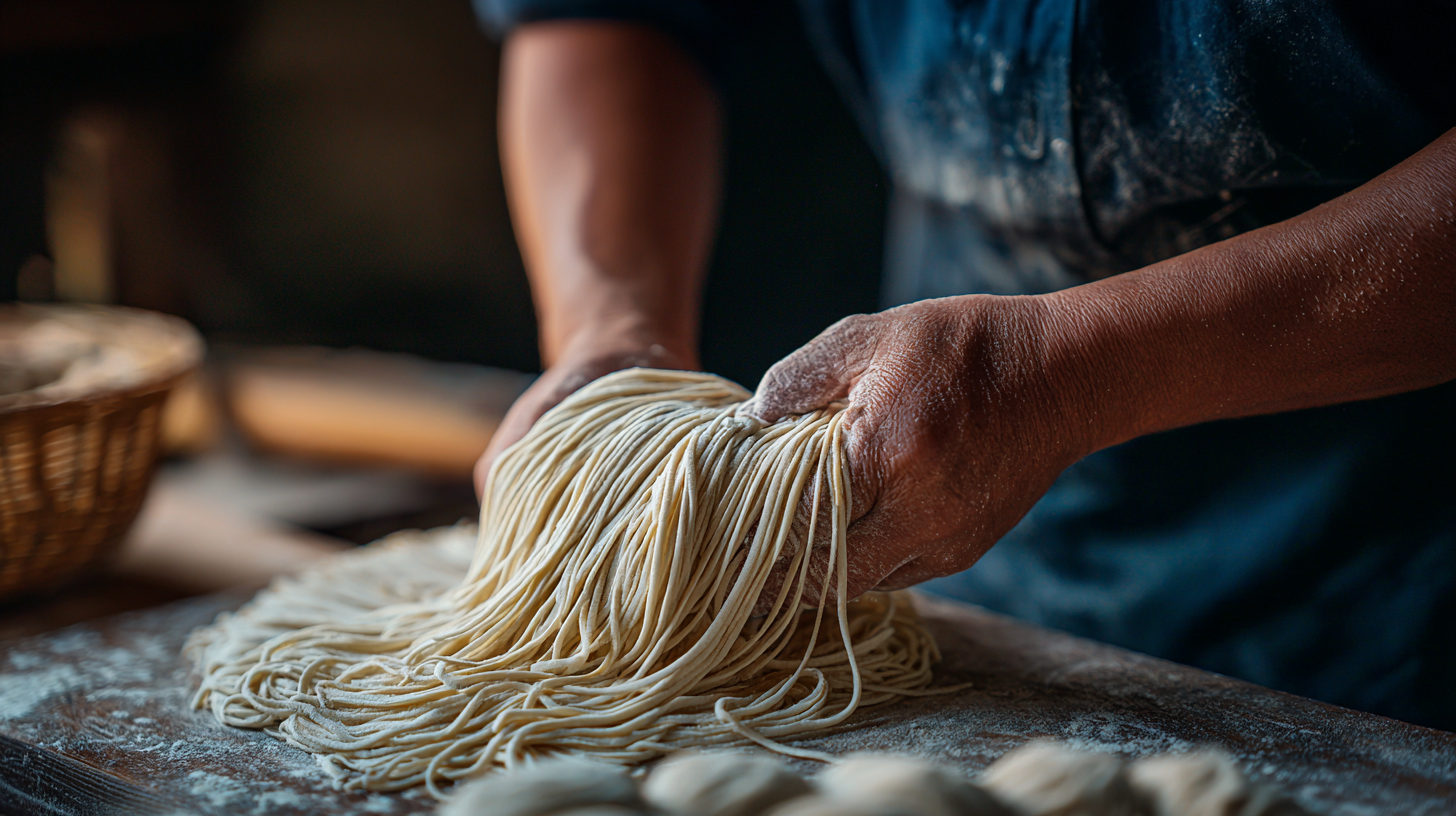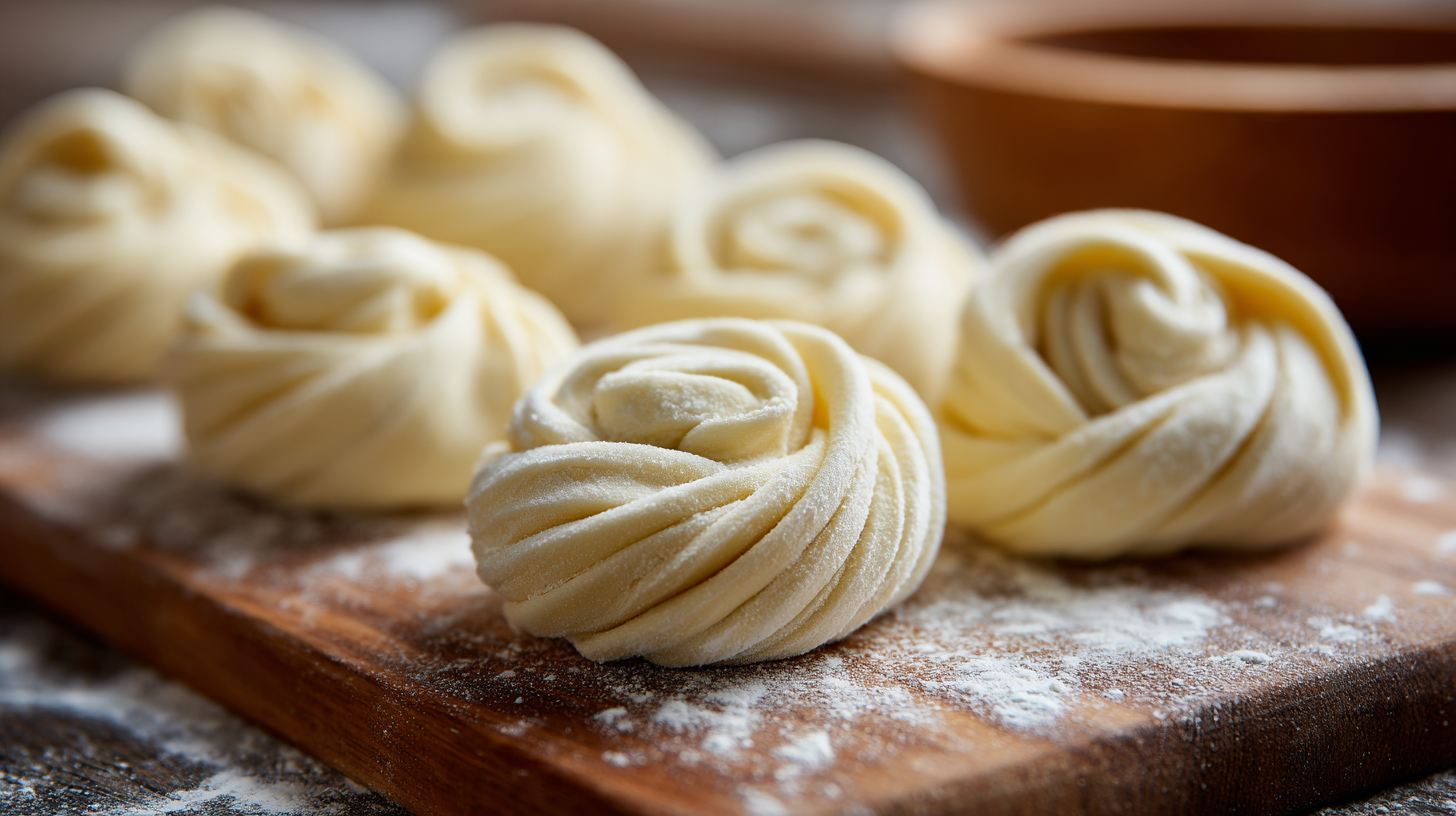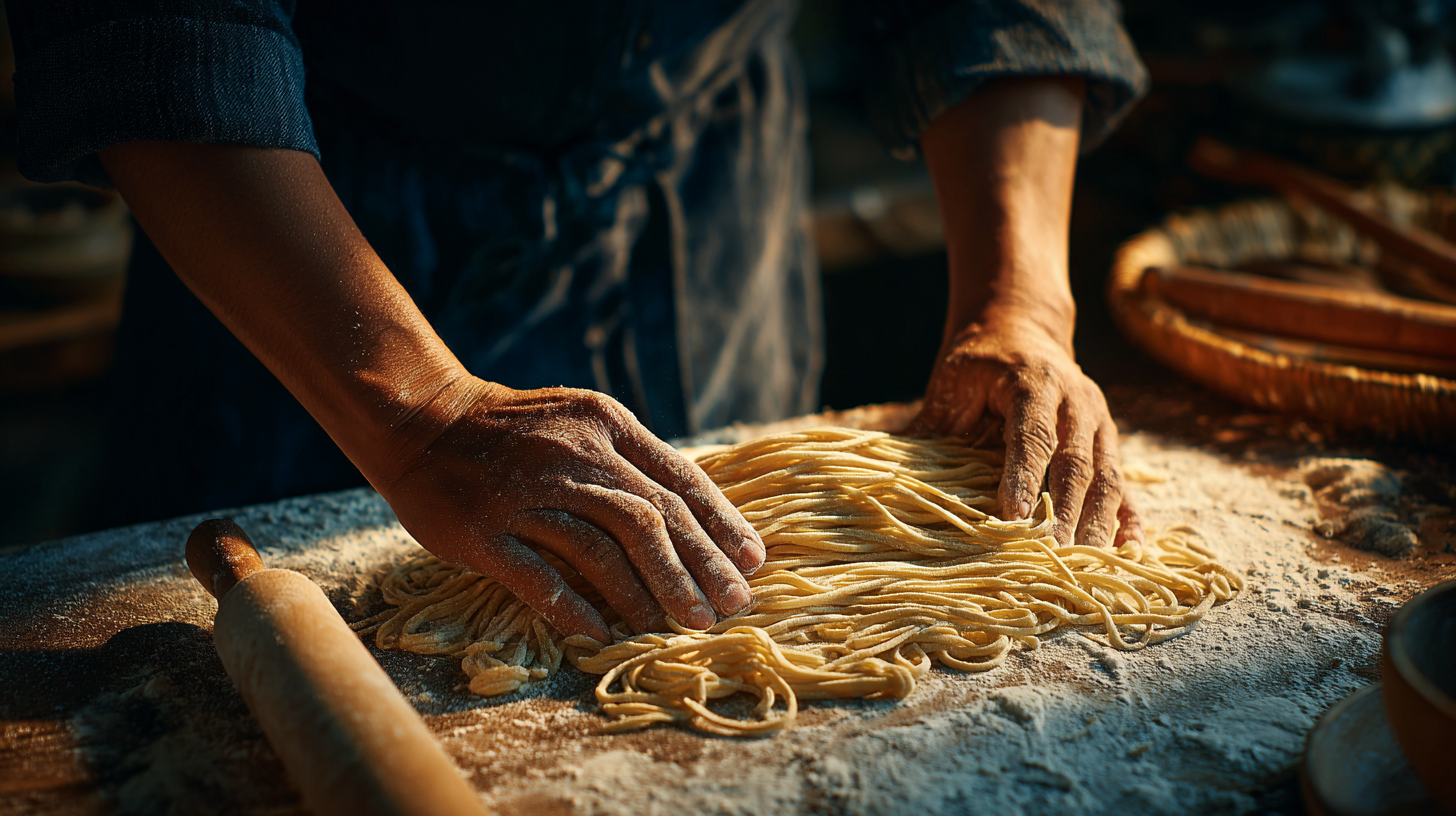
 In recent years, the culinary landscape has witnessed a significant resurgence of
traditional dishes, with hand rolled noodles emerging as a standout favorite among both chefs and food enthusiasts.
According to a recent report by the National Restaurant Association,
67% of diners express a preference for authentic, handcrafted meals, demonstrating a growing appreciation for traditional cooking techniques.
Hand rolled noodles, with their rich texture and unique flavor profiles, not only honor age-old culinary practices but also provide a versatile foundation for modern interpretations of both classic and innovative dishes.
As we explore the various ways to incorporate hand rolled noodles into contemporary cuisine, we also delve into exciting alternatives that blend tradition with modernity,
catering to evolving tastes while ensuring that the essence of this beloved staple remains intact.
In recent years, the culinary landscape has witnessed a significant resurgence of
traditional dishes, with hand rolled noodles emerging as a standout favorite among both chefs and food enthusiasts.
According to a recent report by the National Restaurant Association,
67% of diners express a preference for authentic, handcrafted meals, demonstrating a growing appreciation for traditional cooking techniques.
Hand rolled noodles, with their rich texture and unique flavor profiles, not only honor age-old culinary practices but also provide a versatile foundation for modern interpretations of both classic and innovative dishes.
As we explore the various ways to incorporate hand rolled noodles into contemporary cuisine, we also delve into exciting alternatives that blend tradition with modernity,
catering to evolving tastes while ensuring that the essence of this beloved staple remains intact.
Hand-rolled noodles have been celebrated for their delightful texture and culinary versatility, offering not only a unique dining experience but also numerous nutritional benefits when compared to processed alternatives. Unlike ultra-processed noodles, which often contain refined carbohydrates that can negatively impact health, hand-rolled noodles retain their natural nutrients. For instance, whole grain varieties provide essential fiber, B vitamins, iron, magnesium, and zinc, contributing to improved digestive health and energy levels.
Moreover, innovations in modern cuisine have introduced alternatives such as kelp noodles and quinoa-based options, both rich in nutrients and lower in calories. Kelp noodles are particularly noteworthy, as they are very low in carbohydrates while being high in iodine, which is crucial for thyroid function. Quinoa, known for its complete protein profile, offers a healthful twist to traditional noodle dishes, catering to those seeking gluten-free options.
Tips: When incorporating hand-rolled noodles or healthier alternatives into your meals, consider complementing them with nutrient-dense vegetables and lean proteins to enhance their nutritional profile. Additionally, be mindful of portion sizes when indulging in processed noodles, opting instead for whole-grain varieties to maximize health benefits.
When exploring hand-rolled noodles, one cannot overlook the rich tapestry of global varieties and their unique flavor profiles. For instance, in Taiwan, street vendors and fine dining establishments alike showcase an array of noodles that reflect the island's vibrant culture and history. Dishes like beef noodle soup and oyster vermicelli highlight the balance of flavors, incorporating savory broths and fresh herbs that tantalize the palate. Each bowl tells a story, delivering not just nourishment but an authentic taste of Taiwanese heritage.
In addition to traditional offerings, modern cuisine has taken hand-rolled noodles to new heights. Around the world, innovative chefs are reimagining classic pasta dishes, celebrating national pasta month by presenting creative interpretations of this beloved staple. Whether it's a handmade tagliatelle tossed with a seasonal pesto or fusion dishes that incorporate unexpected ingredients, these noodles offer a delightful mix of textures and tastes. The evolving landscape of noodle dishes demonstrates how diverse and versatile this culinary delight can be, bridging cultures and flavors in every bite.
This chart illustrates the popularity of various hand rolled noodle types and their alternative versions in modern cuisine, highlighting their unique flavor profiles.
In the ever-evolving landscape of modern cuisine, hand-rolled noodles are experiencing a renaissance, driven by innovative techniques that chefs are adopting to amplify their texture and flavor. Renowned culinary minds are experimenting with traditional methods, blending them with contemporary approaches to elevate this age-old dish. Techniques such as fermentation, unique rolling methods, and the incorporation of unexpected ingredients are pushing the boundaries of what hand-rolled noodles can be, transforming them into an art form that delights the palate.
Across various dining establishments, chefs are inspired to craft unique noodle dishes that reflect their individual culinary narratives. Recent trends have seen these hand-rolled noodles being paired with bold sauces or served in fusion styles, inspired by diverse global flavors. As highlighted by the dynamic dining scene in regions like New Jersey, where chefs from various culinary backgrounds converge, it’s evident that the creativity behind hand-rolled noodles is not just about the noodles themselves but about the entire gastronomic experience they provide. The focus on innovation signifies a new era for these beloved noodles, ensuring they hold a prominent place in the future of culinary art.

The culinary landscape is rapidly evolving, with hand-rolled noodles making a striking comeback. Traditionally made from wheat flour, these noodles now embrace a variety of gluten-free and alternative grain options. The gluten-free market alone was valued at approximately $5.6 billion in 2021 and is projected to grow at a CAGR of 9.4% through 2028, as more consumers seek dietary options that cater to their health concerns (source: Grand View Research). Innovations in noodle production have led to exciting alternatives made from rice, quinoa, buckwheat, and even legumes, allowing food enthusiasts to enjoy the texture and flavor of hand-rolled noodles, irrespective of dietary restrictions.
When exploring gluten-free noodles, consider trying a blend of rice and quinoa for a nutrient boost, or buckwheat noodles, which naturally add a unique flavor profile. Always check labels to avoid cross-contamination if you're following a strict gluten-free diet. Home cooks can also experiment with homemade noodles using alternative flours. For instance, using almond flour or coconut flour mixed with eggs can yield tasty, gluten-free versions without sacrificing the pleasure of rolling dough by hand.
As the market adapts to changing consumer preferences, chefs are becoming more adventurous with their noodle creations. Marauding culinary boundaries, they incorporate ingredients such as spirulina for an aesthetic touch or activated charcoal for a trendy twist. This surge in creativity not only enhances the dining experience but also aligns perfectly with modern dietary needs, making hand-rolled noodles a vibrant staple in contemporary cuisine.
| Type of Noodle | Main Ingredient | Gluten-Free Option | Popular Cuisine | Health Benefits |
|---|---|---|---|---|
| Hand Rolled Egg Noodles | Eggs and Wheat Flour | No | Italian, Asian | High in protein |
| Rice Noodles | Rice Flour | Yes | Thai, Vietnamese | Gluten-free, low in fat |
| Zucchini Noodles | Zucchini | Yes | Italian | Low in calories, high in nutrients |
| Quinoa Noodles | Quinoa Flour | Yes | American, Asian | High in fiber, complete protein |
| Buckwheat Noodles | Buckwheat Flour | Yes | Japanese, Asian | Rich in antioxidants, high in fiber |
In recent years, there has been a notable shift in consumer preferences towards artisanal and handcrafted dining experiences, particularly when it comes to noodles. As menus evolve to cater to a more discerning palate, diners are increasingly gravitating towards hand-rolled noodles that not only offer unique textures but also provide a deeper connection to culinary traditions. This trend reflects a broader desire for authenticity in food, where the craft behind each dish tells a story and enhances the dining experience.
As consumers become more educated about the origins of their meals, there’s a rising appreciation for the skill and artistry involved in creating handmade noodles. Restaurants are responding by showcasing these artisanal techniques, often involving signature elements like local ingredients and traditional methods passed down through generations. This not only elevates the dish itself but also engages diners in a narrative of craftsmanship and heritage, making each bite a celebration of culture and innovation in contemporary cuisine.

